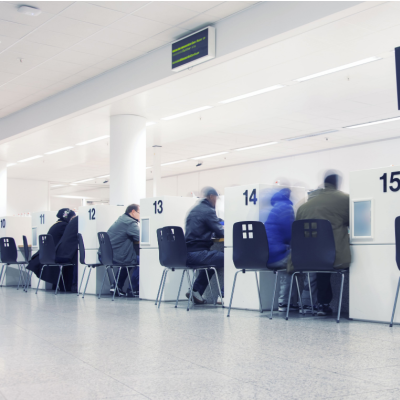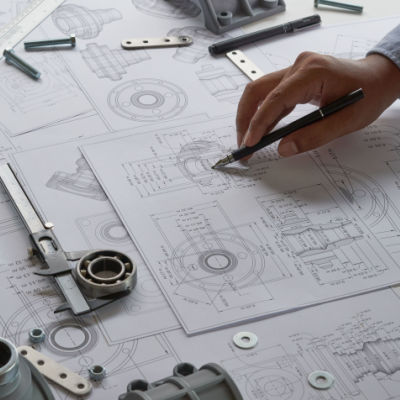
NY ENGINEERS
Plumbing Design Services
Our speciality plumbing solutions are designed with efficiency, functionality, and longevity in mind.

YOUR ONE STOP SHOP FOR ALL MEP NEEDS!
the engineering service your team will love
NY Engineers has completed over 4000+ projects with the fastest industry turnaround while providing cost effective solutions. We are the pioneers of quick, affordable & drama free construction!
Have a project in mind?
Our team of experts are equipped to handle all types of project!

COMMERCIAL KITCHENS

RETAIL

HEALTHCARE

HOTELS

OFFICE SPACES

FRANCHISES

RESIDENTIAL

GOVERNMENT

OTHER
OTHER

IMPRESSED?
Call us or fill out the form and we will call you back within 24 hours!
We can give you 1000 reasons to work with us,
let's start with 6
50
States
We are licensed in all 50 states!
0
Errors
Assess the load of the equipment accurately
4000+
Projects
We have completed so far!
300+
Brands
We work with the biggest names in the Franchise industry
5
Days
Enjoy our lightening fast turnaround
$750
Cost Eff.
Very budget friendly & cost effective
NEED A SPECIFIC SERVICE SOLUTION FROM US?
Some of our most requested services
- Most Requested Services
- System Components In Our Designs
- Agencies Approvals We Secure
- On demand Services
-
Agencies Approvals We Secure

TALK TO OUR PARTNER / PRINCIPAL
In 2024, NY Engineers grew by 25% in terms overall project delivery and customer satisfaction. High quality, quick responsiveness and fast turnarounds are the primary principles on which we thrive on. With rise in cloud kitchen and retail stores in 2025, we plan to expand our reach to all franchise owners and corporates and become their #1 option for Engineering design. We also plan to design and model more energy efficient buildings in order to reduce the overall load on the grid and help reduce global warming.
CALL US NOW
(786) 788-0295
Plumbing Design Services
Discover excellence in plumbing design services at NY Engineers. Our seasoned plumbing designers lead the industry, ensuring your projects are equipped with innovative and efficient plumbing systems. With a relentless commitment to precision and compliance, we tailor solutions that optimize performance and sustainability. Our experts bring years of experience to every project, offering comprehensive plumbing design services that guarantee reliability and cost-effectiveness. At NY Engineers, we understand that exceptional plumbing design is crucial to the success of any building project. Trust us to deliver the highest standards in plumbing design services, setting the foundation for your project's success.
- Plumbing Design Services we Offer
- The 4 steps of the NY Engineers plumbing design service
- Why NY Engineers for best plumbing design services?
- We Provide Plumbing Design Services to:
- Meeting a range of needs
Bridging the gap between innovation and necessity within the plumbing design services we offer, we proudly specialize in the following services:
Hot Water System Design
NY Engineers' plumbing design services adhere to IPC 2015, ensuring potable water supply. Our experienced plumbing designers merge leading technology for cost-effective, energy-efficient hot water solutions.
Vent Piping Design
Our plumbing design engineers offer efficient and affordable design services that comply with local codes and regulations. Our vent piping design ensures odor-free ventilation and proper ventilation items and joints for optimal airflow.
Gas Piping Design
At NY Engineers, our plumbing design services ensure expert plumbing designs for gas piping. Meeting safety, heat energy, and pressure demands, we prioritize compliance and professional guidance.
Domestic water system design
Our experts provide top-notch plumbing design services, focusing on sustainable and reliable plumbing designs for domestic water systems, ensuring safety and optimal performance throughout.
Sanitary system design
Plumbing design services by NY Engineers emphasize superior, code-compliant sanitary system design. We ensure efficient processes and timely sewer filings for optimal reliability.
Rainwater harvesting system design
Specializing in plumbing design services, NY Engineers crafts rainwater harvesting solutions tailored for end-use. We prioritize safe, reliable systems and water quality for diverse applications.
Hot water heater design
Prioritizing energy efficiency and safety, our plumbing design services craft optimal hot water heater solutions. Guided by expert plumbing design engineers, we ensure flexibility, effectiveness, and cost-conscious recommendations.
Commercial laundry design
With the guidance of our expert plumbing design engineers, we offer advanced plumbing design services for commercial laundries, emphasizing functional layouts and cost- & energy-efficient solutions.
New gas service
Offering specialized plumbing design solutions, we ensure reliable plan reviews, flat pricing for gas service approval, and swift turnarounds, for new gas service applications.
New sewer service
Our plumbing engineers specialize in new sewer service, focusing on sustainable plans and reliable utility filings. With a flat price for DEP approval, we prioritize transparency and efficiency.
Gas leak correction
We ensure thorough testing for gas leaks in any property size. We test the existing system thoroughly and identify leaks as quickly as possible. As licensed engineers, we provide expert solutions for leak rectifications.
Plumbing riser diagram
We provide a plumbing riser diagram that ensures compliance with building codes, providing detailed graphics for plumbers and permits. We emphasize energy-efficient systems and facilitate efficient alterations and upgrades.
Site connection
For site connection, our process starts with secure file uploads. Engineers review, initiate design, and ensure quality by adhering to IBC and local codes. Expect a lightning-fast 5-day turnaround time.
Blue roof design
Blue roof design by our MEP engineers ensures controlled-flow roof drainage, offering sustainable urban solutions against flooding. It aids in effectively managing stormwater and enhancing water resource utilization for diverse uses.
Oil-to-gas boiler conversion
Plumbing design services by our team streamline oil-to-gas boiler conversions, prioritizing energy efficiency, reliable installations, and a reduced carbon footprint for cleaner, cost-effective heating solutions.
New water service
Our team provides new water service interfacing with the Department of Environmental Protection. With efficient utility filings, we ensure energy-efficient systems for optimum flow rate and pressure in the United States.
Plumbing fixture schedule
We deliver accurate plumbing fixture schedules for all construction projects, collaborating seamlessly with AEC professionals. Leveraging reliable BIM software, we ensure precision from specification to handover.
Lint Interceptor System Design
For retail settings, our lint interceptor system design is paramount. Efficiently preventing lint build-up, it ensures optimal drainage, protecting facilities from blockages and potential damages. Partner with NY Engineers for a meticulous approach to maintaining clean wastewater lines in retail environments.
Oil Interceptor System Design
Our oil interceptor system designs for retail spaces prioritize environmental responsibility and safety. Expertly crafted to capture oils and prevent contamination, these systems are essential for upholding eco-friendly retail operations. NY Engineers delivers solutions that blend innovation with compliance, ensuring your retail space operates seamlessly and responsibly.
Medical Gas/Drainage System Design
NY Engineers design medical gas and drainage systems for healthcare adhering to NFPA 99 standards. Thus ensuring safe, efficient, and compliant setups for healthcare environments like Oxygen (O2) and Medical Vacuum delivery.
Gas Pressure Booster Pump Design
NY Engineers provide accurate and energy-efficient gas booster pump designs. Our meticulous MEP design process ensures long-lasting systems, optimizing performance and minimizing future energy costs.
Domestic water filtration system design
We excel in creating sustainable water filtration designs, emphasizing reduced energy consumption and waste.
Grease interceptor system design
NY Engineers design grease interceptors for kitchens and hotels, ensuring efficient grease trapping and compliance with the local Department of Environmental Protection standards. We prioritize hygiene and sustainability.
Water Pressure booster system design
Expertly designed pressure-boosting systems enhance water flow and pressure. From Direct boosting to VFD-controlled systems, ensure optimal performance, efficiency, and reduced running costs with us.
Gas to Electric water heater conversion system design
Gas to Electric water heater conversion system design enhances energy efficiency and sustainability. Our expert engineers ensure a seamless transition, prioritizing safety, performance, and cost-effectiveness in every project.
At NY Engineers, our commitment to excellence is demonstrated through our systematic approach to plumbing design services. As leading MEP engineers, we've curated a four-step process to ensure client satisfaction and project precision.
1. Project planning (consultation and quotation)
Every successful project starts with meticulous planning. Our team engages in detailed consultations, understanding the unique needs of every client. We then provide a comprehensive quotation, ensuring transparency from the outset.
2. Plumbing design engineering (including CAD drafting, CAD conversion, CAD to BIM conversion, and as required)
Utilizing advanced tools like CAD drafting, CAD conversion, CAD to BIM conversion, and Revit, our plumbing engineering services guarantee unparalleled accuracy and a code compliant design. Every minute detail is meticulously crafted, ensuring alignment with the project’s overarching goals.
3. Project reviews (design change management/quality control)
Continuous improvement is a hallmark of our approach. We engage in design change management and stringent quality control measures. Every project undergoes multiple reviews, ensuring that any necessary alterations are made promptly, maintaining the project's integrity.
4. Project delivery (multiple formats available)
Recognizing the diverse needs of our clientele, we offer our deliverables in multiple formats, ensuring compatibility and ease of integration.
Through this structured process, our plumbing design services not only meet but often exceed client expectations, reinforcing our reputation as one of the industry's best.
Selecting the right partner for plumbing design services is crucial to ensuring the longevity and efficiency of your systems. At NY Engineers, our reputation precedes us, and for good reason.
- We are licensed in all 50 states!
- Fast turnaround time
- Energy efficiency
- Expertise in a variety of solutions
Beyond our impressive credentials, our commitment to delivering top-tier plumbing design services distinguishes us in the industry. We understand the intricate demands of modern infrastructures and stand ready to provide solutions tailored to every unique project. Partner with us and experience the NY Engineer's difference.
Homeowners
Whether you're building a new home or renovating an existing space, our plumbing design services cater to homeowners' specific needs. From crafting an efficient plumbing riser to detailed hydraulic calculations, we ensure your home's systems function seamlessly. Our expertise extends to sanitary design, site connection, water heater design, and gas load letter formulation. Each design is tailored, ensuring a safe and sustainable living environment.
Architects/Developers
Architects and developers require a different set of plumbing design services. We are adept at translating architectural visions into functional realities. Our MEP design capabilities integrate seamlessly with any architectural plan. Additionally, our proficiency in CAD to Revit conversions ensures that development projects are both innovative and practical.
Contractors
For contractors, precision and efficiency are paramount. Our team provides CAD to Revit conversions and hydraulic calculations, facilitating smooth project execution. We understand the challenges contractors face and offer solutions that streamline construction processes while ensuring plumbing system integrity.
At NY Engineers, we pride ourselves on offering tailored solutions to diverse clients, ensuring every plumbing system is designed with the utmost precision and functionality.
NY Engineers excel in offering specialized plumbing design services, adeptly handling diverse project requirements across various sectors. Our team, deeply rooted in domestic plumbing expertise, integrates seamlessly with mechanical and electrical units to provide comprehensive MEP services. Committed to upholding international and local safety standards, our services are pivotal for obtaining certifications such as ISO19650, ISO14001, ISO9001, USGBC LEED, and local department of Buildings approvals. Beyond mere plumbing, our MEP services ensure competitive bidding, superior workmanship, and a streamlined construction process. Harnessing advanced technology, we deliver precise 2D and 3D design representations, encompassing BIM, throughout the entire project lifecycle.
Reach out to NY Engineers now and elevate your project with top-tier plumbing design solutions.
Talk to our principal
Anuj Srivastava
Bridging the gap between innovation and necessity within the plumbing design services we offer, we proudly specialize in the following services:
Hot Water System Design
NY Engineers' plumbing design services adhere to IPC 2015, ensuring potable water supply. Our experienced plumbing designers merge leading technology for cost-effective, energy-efficient hot water solutions.
Vent Piping Design
Our plumbing design engineers offer efficient and affordable design services that comply with local codes and regulations. Our vent piping design ensures odor-free ventilation and proper ventilation items and joints for optimal airflow.
Gas Piping Design
At NY Engineers, our plumbing design services ensure expert plumbing designs for gas piping. Meeting safety, heat energy, and pressure demands, we prioritize compliance and professional guidance.
Domestic water system design
Our experts provide top-notch plumbing design services, focusing on sustainable and reliable plumbing designs for domestic water systems, ensuring safety and optimal performance throughout.
Sanitary system design
Plumbing design services by NY Engineers emphasize superior, code-compliant sanitary system design. We ensure efficient processes and timely sewer filings for optimal reliability.
Rainwater harvesting system design
Specializing in plumbing design services, NY Engineers crafts rainwater harvesting solutions tailored for end-use. We prioritize safe, reliable systems and water quality for diverse applications.
Hot water heater design
Prioritizing energy efficiency and safety, our plumbing design services craft optimal hot water heater solutions. Guided by expert plumbing design engineers, we ensure flexibility, effectiveness, and cost-conscious recommendations.
Commercial laundry design
With the guidance of our expert plumbing design engineers, we offer advanced plumbing design services for commercial laundries, emphasizing functional layouts and cost- & energy-efficient solutions.
New gas service
Offering specialized plumbing design solutions, we ensure reliable plan reviews, flat pricing for gas service approval, and swift turnarounds, for new gas service applications.
New sewer service
Our plumbing engineers specialize in new sewer service, focusing on sustainable plans and reliable utility filings. With a flat price for DEP approval, we prioritize transparency and efficiency.
Gas leak correction
We ensure thorough testing for gas leaks in any property size. We test the existing system thoroughly and identify leaks as quickly as possible. As licensed engineers, we provide expert solutions for leak rectifications.
Plumbing riser diagram
We provide a plumbing riser diagram that ensures compliance with building codes, providing detailed graphics for plumbers and permits. We emphasize energy-efficient systems and facilitate efficient alterations and upgrades.
Site connection
For site connection, our process starts with secure file uploads. Engineers review, initiate design, and ensure quality by adhering to IBC and local codes. Expect a lightning-fast 5-day turnaround time.
Blue roof design
Blue roof design by our MEP engineers ensures controlled-flow roof drainage, offering sustainable urban solutions against flooding. It aids in effectively managing stormwater and enhancing water resource utilization for diverse uses.
Oil-to-gas boiler conversion
Plumbing design services by our team streamline oil-to-gas boiler conversions, prioritizing energy efficiency, reliable installations, and a reduced carbon footprint for cleaner, cost-effective heating solutions.
New water service
Our team provides new water service interfacing with the Department of Environmental Protection. With efficient utility filings, we ensure energy-efficient systems for optimum flow rate and pressure in the United States.
Plumbing fixture schedule
We deliver accurate plumbing fixture schedules for all construction projects, collaborating seamlessly with AEC professionals. Leveraging reliable BIM software, we ensure precision from specification to handover.
Lint Interceptor System Design
For retail settings, our lint interceptor system design is paramount. Efficiently preventing lint build-up, it ensures optimal drainage, protecting facilities from blockages and potential damages. Partner with NY Engineers for a meticulous approach to maintaining clean wastewater lines in retail environments.
Oil Interceptor System Design
Our oil interceptor system designs for retail spaces prioritize environmental responsibility and safety. Expertly crafted to capture oils and prevent contamination, these systems are essential for upholding eco-friendly retail operations. NY Engineers delivers solutions that blend innovation with compliance, ensuring your retail space operates seamlessly and responsibly.
Medical Gas/Drainage System Design
NY Engineers design medical gas and drainage systems for healthcare adhering to NFPA 99 standards. Thus ensuring safe, efficient, and compliant setups for healthcare environments like Oxygen (O2) and Medical Vacuum delivery.
Gas Pressure Booster Pump Design
NY Engineers provide accurate and energy-efficient gas booster pump designs. Our meticulous MEP design process ensures long-lasting systems, optimizing performance and minimizing future energy costs.
Domestic water filtration system design
We excel in creating sustainable water filtration designs, emphasizing reduced energy consumption and waste.
Grease interceptor system design
NY Engineers design grease interceptors for kitchens and hotels, ensuring efficient grease trapping and compliance with the local Department of Environmental Protection standards. We prioritize hygiene and sustainability.
Water Pressure booster system design
Expertly designed pressure-boosting systems enhance water flow and pressure. From Direct boosting to VFD-controlled systems, ensure optimal performance, efficiency, and reduced running costs with us.
Gas to Electric water heater conversion system design
Gas to Electric water heater conversion system design enhances energy efficiency and sustainability. Our expert engineers ensure a seamless transition, prioritizing safety, performance, and cost-effectiveness in every project.
At NY Engineers, our commitment to excellence is demonstrated through our systematic approach to plumbing design services. As leading MEP engineers, we've curated a four-step process to ensure client satisfaction and project precision.
1. Project planning (consultation and quotation)
Every successful project starts with meticulous planning. Our team engages in detailed consultations, understanding the unique needs of every client. We then provide a comprehensive quotation, ensuring transparency from the outset.
2. Plumbing design engineering (including CAD drafting, CAD conversion, CAD to BIM conversion, and as required)
Utilizing advanced tools like CAD drafting, CAD conversion, CAD to BIM conversion, and Revit, our plumbing engineering services guarantee unparalleled accuracy and a code compliant design. Every minute detail is meticulously crafted, ensuring alignment with the project’s overarching goals.
3. Project reviews (design change management/quality control)
Continuous improvement is a hallmark of our approach. We engage in design change management and stringent quality control measures. Every project undergoes multiple reviews, ensuring that any necessary alterations are made promptly, maintaining the project's integrity.
4. Project delivery (multiple formats available)
Recognizing the diverse needs of our clientele, we offer our deliverables in multiple formats, ensuring compatibility and ease of integration.
Through this structured process, our plumbing design services not only meet but often exceed client expectations, reinforcing our reputation as one of the industry's best.
Selecting the right partner for plumbing design services is crucial to ensuring the longevity and efficiency of your systems. At NY Engineers, our reputation precedes us, and for good reason.
- We are licensed in all 50 states!
- Fast turnaround time
- Energy efficiency
- Expertise in a variety of solutions
Beyond our impressive credentials, our commitment to delivering top-tier plumbing design services distinguishes us in the industry. We understand the intricate demands of modern infrastructures and stand ready to provide solutions tailored to every unique project. Partner with us and experience the NY Engineer's difference.
Homeowners
Whether you're building a new home or renovating an existing space, our plumbing design services cater to homeowners' specific needs. From crafting an efficient plumbing riser to detailed hydraulic calculations, we ensure your home's systems function seamlessly. Our expertise extends to sanitary design, site connection, water heater design, and gas load letter formulation. Each design is tailored, ensuring a safe and sustainable living environment.
Architects/Developers
Architects and developers require a different set of plumbing design services. We are adept at translating architectural visions into functional realities. Our MEP design capabilities integrate seamlessly with any architectural plan. Additionally, our proficiency in CAD to Revit conversions ensures that development projects are both innovative and practical.
Contractors
For contractors, precision and efficiency are paramount. Our team provides CAD to Revit conversions and hydraulic calculations, facilitating smooth project execution. We understand the challenges contractors face and offer solutions that streamline construction processes while ensuring plumbing system integrity.
At NY Engineers, we pride ourselves on offering tailored solutions to diverse clients, ensuring every plumbing system is designed with the utmost precision and functionality.
NY Engineers excel in offering specialized plumbing design services, adeptly handling diverse project requirements across various sectors. Our team, deeply rooted in domestic plumbing expertise, integrates seamlessly with mechanical and electrical units to provide comprehensive MEP services. Committed to upholding international and local safety standards, our services are pivotal for obtaining certifications such as ISO19650, ISO14001, ISO9001, USGBC LEED, and local department of Buildings approvals. Beyond mere plumbing, our MEP services ensure competitive bidding, superior workmanship, and a streamlined construction process. Harnessing advanced technology, we deliver precise 2D and 3D design representations, encompassing BIM, throughout the entire project lifecycle.
Reach out to NY Engineers now and elevate your project with top-tier plumbing design solutions.
Talk to our principal
Anuj Srivastava
ON DEMAND
VALUE ADD
Miami, Florida 33179276 5th Avenue, Suite 704 #904
New York, NY 10001





